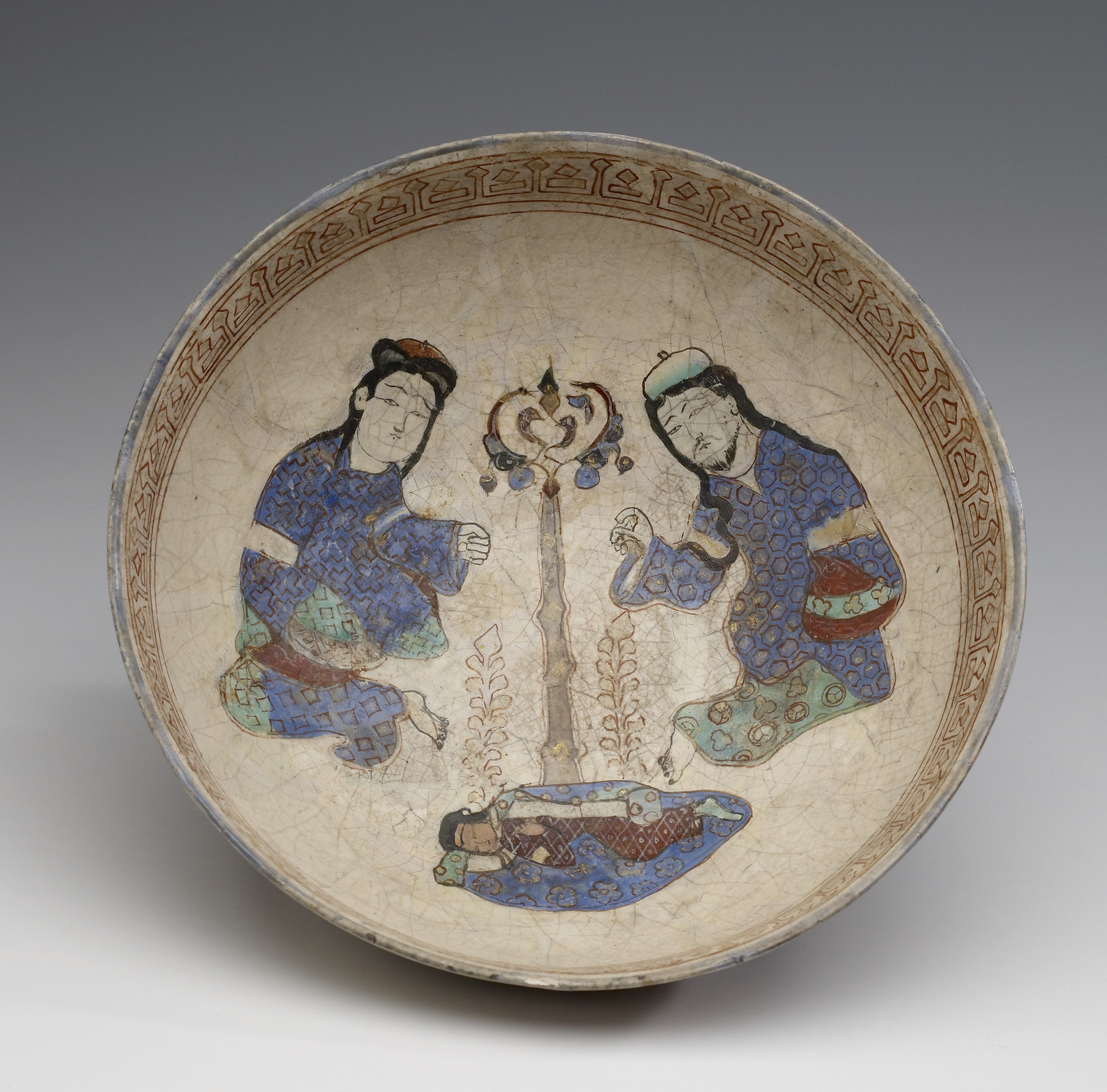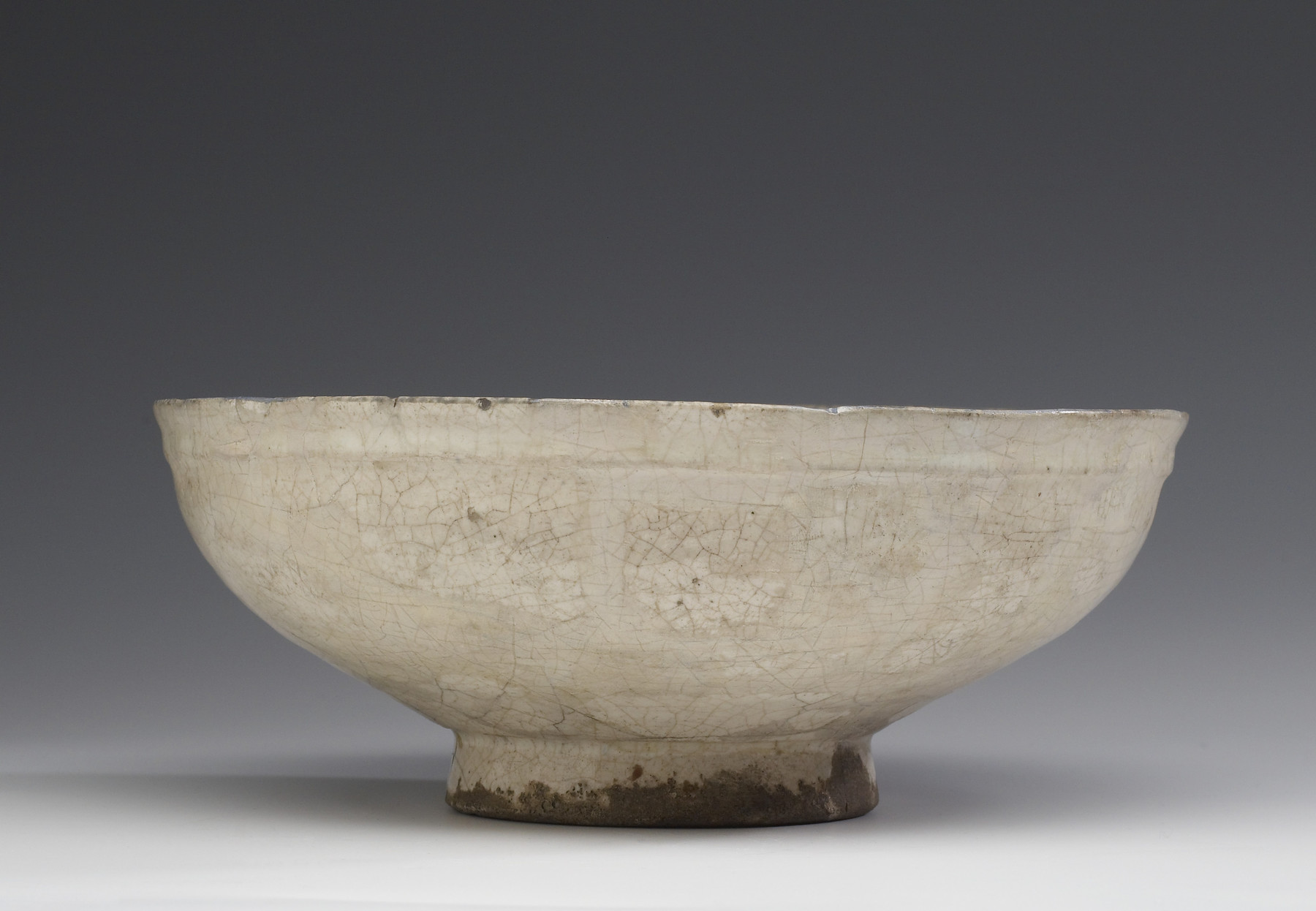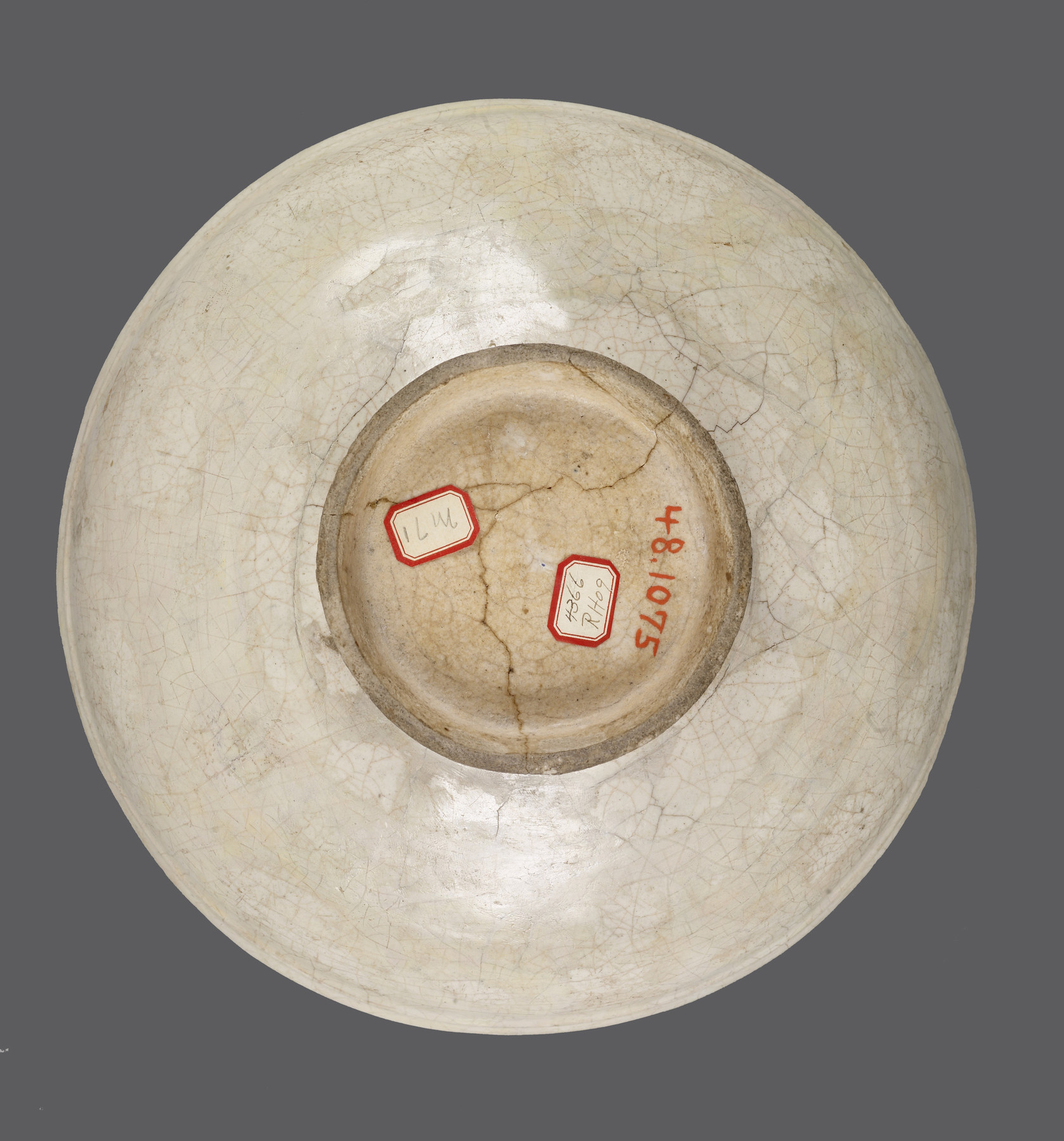Bowl with Seated Figures Flanking a Tree
(Islamic World )
Mina’i is a modern collectors’ term for ceramics made in Iran during the late 12th to early 13th centuries. The term mina’i, translates as “enamelled” in Persian, designating the colored glass pigments used to paint detailed figural decoration on vessels or tiles, which were then fixed on the ceramic base by multiple firings. The use of a wide range of colors, including turquoise, red, green, purple, and black, also led these types of ceramics to be called by the Persian term “haft rang,” or “seven colors.”
Mina’i ware scenes often depict courtly pursuits, such as feasting, fighting, or poetry and music performances. These colorful compositions created complex narrative scenes which paralleled manuscript painting. The combination of leisurely activities with more warrior-like occupations, such as hunting, was frequently used in the medieval Persian iconography of kingship. This is referred to as bazm wa razm, or feasting and fighting. The two figures here are seated flanking a tree in a possible garden setting, while a female figure is laying in a small pool of water below. A pseudo-kufic inscription can be seen along the bowl's inner rim.
Provenance
Provenance (from the French provenir, 'to come from/forth') is the chronology of the ownership, custody, or location of a historical object. Learn more about provenance at the Walters.
Acquired by Henry Walters, Baltimore; by bequest to Walters Art Museum, 1931.
Geographies
Iran, Kashan (Place of Origin)
Measurements
H: 3 3/16 × Diam: 8 7/16 in. (8.1 × 21.4 cm)
Credit Line
Acquired by Henry Walters
Location in Museum
Not on view
Accession Number
In libraries, galleries, museums, and archives, an accession number is a unique identifier assigned to each object in the collection.
In libraries, galleries, museums, and archives, an accession number is a unique identifier assigned to each object in the collection.
48.1075










